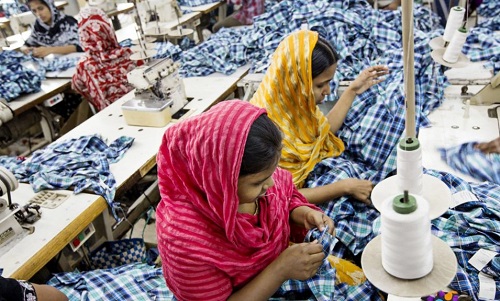INDIAN TEXTILE AND APPAREL EXPORTS TO SURGE WITH FTAS AND LOW IMPORT DUTIES

INDIAN TEXTILE AND APPAREL EXPORTS TO SURGE WITH FTAS AND LOW IMPORT DUTIES
Over the last 20 years, India’s textile and apparel exports declined from 24 per cent in 2001 to 11 per cent in 2020. Exports of cotton yarn declined from 2 per cent to 1 per cent while RMG exports fell from 11 per cent to 4 per cent. According to a report by CRISIL Research, cotton yarn accounted for India’s total textile and apparel exports in the last financial year, while RMG exports accounted for 28 per cent. Lack of FTAs and increased competition are some of the reasons for India’s dismal exports over the years.
India’s loses share to low-cost competitors
As per Textile Today, the textile industry accounts for 11 per cent of India’s total $313 billion exports. It also employs around 45 million direct employees and 60 million employees in the allied industries. However, over the last few years, the sector has lost share in the cotton yarn market to competitors Vietnam, Bangladesh and China. The Indian apparel segment too suffered from increased competition from these nations.
and 60 million employees in the allied industries. However, over the last few years, the sector has lost share in the cotton yarn market to competitors Vietnam, Bangladesh and China. The Indian apparel segment too suffered from increased competition from these nations.
The sector was further pushed to the edge in 2020 as the Central government reoriented export incentives according to World Trade Organization guidelines. Though it later launched the Remission of Duties and Taxes on Export Products (RoDTEP) scheme to decrease tax burden on exports, incentives for exporters are unlikely to improve, says the CRISIL Research report.
PLI to boost MMF-based RMG exports
The recently announced PLI scheme for man-made fibers (MMF) and technical textiles is expected to boost India’s MMF-based RMG exports. It is also expected to increase India’s share in the global export market over the medium to long term. To be successful, the scheme needs to be supported with trade negotiations and investments. India can fill the void created by China by making continuous and concentrated efforts to boost exports to the EU and US, says the CRISIL report.
The US-China trade war has created a demand for Indian originated RMG exports in the global market. India can explore this opportunity to re-establish relations with global brands. It needs to sign new trade agreements and lower import duties in key export destinations. By doing this, India can increase presence in global trade and help brands reduce their dependency on China.
By Fashionating World
https://www.fashionatingworld.com/new1-2/indian-textile-and-apparel-exports-to-surge-with-ftas-and-low-import-duties
